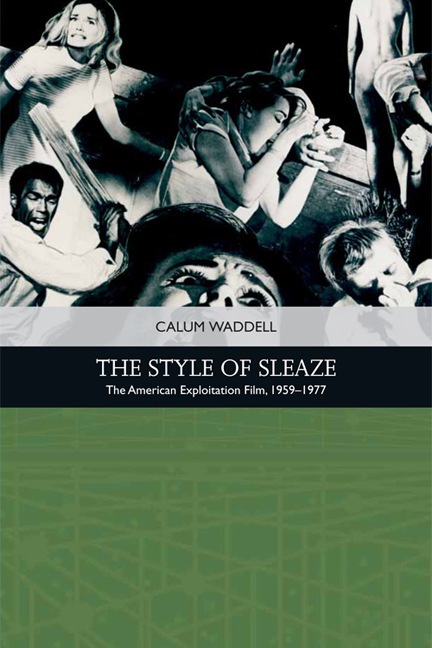Book contents
- Frontmatter
- Contents
- List of Figures
- Acknowledgements
- Introduction
- 1 Not Quite Hollywood
- 2 Emerging from Another Era – Narrative and Style in Modern Exploitation Cinema
- 3 Can We Call It Sexploitation?
- 4 Sex Morality Plays: Character in Adult Cinema
- 5 The Body is Everything: Sexploitation Spectacle
- 6 Exploitation-Horror Cinema
- 7 Cannibalising Tradition: Romero’s Zombies and a Blood Feast
- 8 Slash and Burn: The Exploitation-Horror Film in Transition
- 9 Blaxploitation Cinema: Race and Rebellion
- 10 Sex, Violence and Urban Escape: Blaxploitation Tropes and Tales
- 11 The Blaxploitation Female
- 12 Exploitation as a Movement
- Select Bibliography
- Index
6 - Exploitation-Horror Cinema
Published online by Cambridge University Press: 11 November 2020
- Frontmatter
- Contents
- List of Figures
- Acknowledgements
- Introduction
- 1 Not Quite Hollywood
- 2 Emerging from Another Era – Narrative and Style in Modern Exploitation Cinema
- 3 Can We Call It Sexploitation?
- 4 Sex Morality Plays: Character in Adult Cinema
- 5 The Body is Everything: Sexploitation Spectacle
- 6 Exploitation-Horror Cinema
- 7 Cannibalising Tradition: Romero’s Zombies and a Blood Feast
- 8 Slash and Burn: The Exploitation-Horror Film in Transition
- 9 Blaxploitation Cinema: Race and Rebellion
- 10 Sex, Violence and Urban Escape: Blaxploitation Tropes and Tales
- 11 The Blaxploitation Female
- 12 Exploitation as a Movement
- Select Bibliography
- Index
Summary
In my previous three chapters I maintained that the sexploitation style was grounded within a small pocket of influential features: a controversial statement but one, I think, which can be justified with the conclusion that this style finally exhausted the opportunity for any grand progression. My own argument is that once a trend based on stimulating interest by, to a large extent, transgressing boundaries of aesthetic and thematic acceptance is exhausted, there is little where else to go. In my sexploitation chapter, for instance, I indicated how sex films would later – as with 9½ Weeks – return to the old formula of ‘teasing’ the audience with the promise of, but not realisation of, something salacious – an approach that has more in common with the classical era of sexploitation, as documented by Eric Schaefer. To suggest a similar trajectory – the eventual exhaustion of spectacle and style – from the American horror film, however, may seem ridiculous. In the 1980s there were a number of international censorship scandals surrounding horror cinema – from the video-nasties scandal in the UK to critics Siskel and Ebert famously berating Friday the 13th for its gruesome on-screen murders. Clearly, horror still caused shock.
What I want to suggest is that the demarcation we call ‘the exploitation-horror genre’ began, grew and fatigued as an entirely different entity from these glossier and better-realised films that typified the sequel-mania of the 1980s (Friday the 13th, Sleepaway Camp) and, to a larger extent, the video-rental period. Just as the likes of Behind the Green Door, The Devil in Miss Jones and The Opening of Misty Beethoven took the sexploitation style defined by the classical era and then Russ Meyer and evolved both narrative and spectacle, so too does the exploitation-horror film represent a progression of aesthetic and thematic elements. That this style later became, as with Friday the 13th or even the more cheaply produced Troma productions, adapted into something more grandstanding – all about the spectacle in other words – does not necessarily indicate that the films themselves should be considered to be ‘just the same’ as those of this chapter.
- Type
- Chapter
- Information
- The Style of SleazeThe American Exploitation Film, 1959–</I>1977, pp. 97 - 109Publisher: Edinburgh University PressPrint publication year: 2018



